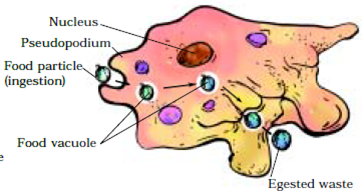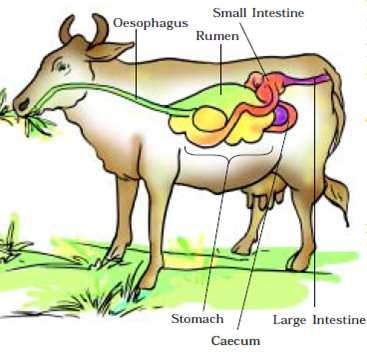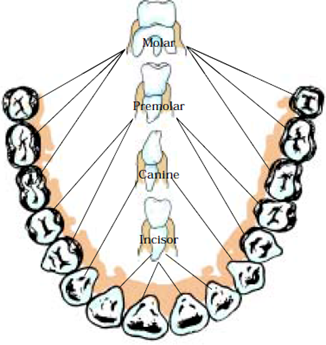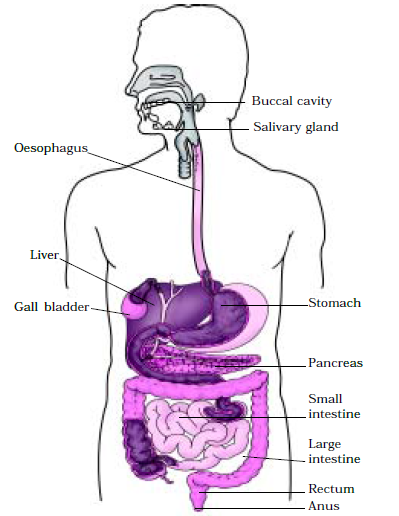Extra Questions for Class 7 Science Chapter 2 Nutrition in Animals
Extra questions for Class 7 Science Chapter 2 Nutrition in Animals with answers is given below. Our subject expert prepared these solutions as per the latest NCERT textbook. These questions will be helpful to revise the all topics and concepts. CBSE Class 7 extra questions are the most simple and conceptual questions that are prepared by subject experts for the students to study well for the final exams. By solving these extra questions, students can be very efficient in their exam preparations.
Nutrition in Animals Class 7 Science Extra Questions and Answers
Very Short Extra Questions and Answer
1. Do all animals have the same mode of nutrition?
Answer: No
2. Name the mode of nutrition in which solid whole food particles is ingested.
Answer: Holozoic
3. What is the organ that stores bile?
Answer: Gall bladder
4. Which part of the digestive canal is involved in killing bacteria?
Answer: Stomach
5. Name the part of digestive canal involved in chewing of food.
Answer: Mouth
6. Where are fats digested in the body?
Answer: Fats are mainly digested in the small intestine.
7. Where is the water from undigested food absorbed in the body?
Answer: Water from undigested food is absorbed in the body in large intestine.
8. What kills bacteria that enter along with the juices to act?
Answer: The acid kills many bacteria that enter along with the juices to act.
9. Where food is completely digested?
Answer: The food is completely digested in the small intestine.
10. Where are faeces formed in the human body?
Answer: Faeces are formed in the human body in large intestine.
11. Which glands secrete saliva?
Answer: Salivary glands secrete saliva.
12. Where food is absorbed in our body?
Answer: Absorption of food takes place in small intestine.
13. Which gland in our body secretes bile?
Answer: Bile is a digestive juice that is secreted by the liver.
14. Where faeces are stored?
Answer: Faeces are stored in rectum.
15. What are the end products of carbohydrate?
Answer: The carbohydrates get broken into simple sugars such as glucose.
16. Name the end products of fats.
Answer: Fatty acids and Glycerol
17. Write the end products of proteins.
Answer: Amino acids
18. What causes diarrhoea in human beings?
Answer: It may be caused by an infection, food poisoning or indigestion.
19. Which is the largest gland in the human body?
Answer: Liver is the largest gland in human body.
20. What is ingestion?
Answer: The process of taking food into the body is called ingestion.
21. What are the different types of teeth?
Answer: We have different types of teeth: incisor, canine, premolar and molar.
22. What does saliva do to food in our mouth?
Answer: The saliva breaks down the starch into sugars.
23. How does food pass from the mouth to the stomach?
Answer: Food is pushed down by movement of the wall of the food pipe.
24. What is rumen?
Answer: Ruminants have a large sac-like structure called rumen.
25. How does an amoeba move?
Answer: Amoeba use pseudopodia (false feet) to move.
26. What is the finger like projections present in the inner wall of the small intestine?
Answer: Villi
27. Which organ expelled out the undigested and unabsorbed residues from human body?
Answer: Anus
28. What are permanent teeth?
Answer: The second set that replaces a temporary milk teeth are the permanent teeth.
Short Extra Questions and Answers
1. What does animal nutrition include?
Answer: Animal nutrition includes nutrient requirement, mode of intake of food and its utilisation in the body.
2. What do you mean by animal nutrition?
Answer: Animal nutrition includes nutrient requirement, mode of intake of food and its utilisation in the body.
3. What are the different modes of feeding in animals?
Answer: Scraping, chewing, brewing, capturing and swallowing, sucking etc. are the different mode of feeding in animals.
4. What is digestion?
Answer: The breakdown of complex components of food into simpler substances is called digestion.
5. Name the glands that secrete digestive juices.
Answer: Glands associated such as salivary glands, the liver and the pancreas secrete digestive juices.
6. What is diarrhoea?
Answer: Sometime we may have experienced the need to pass watery stool frequently. This condition is known as diarrhoea.
7. What is ORS?
Answer: Boiled and cooled water with a pinch of salt and sugar dissolved in it is called Oral Rehydration Solution (ORS).
8. Where is the bile produced? Which component of the food does it help to digest?
Answer: Bile is produced in liver. The bile plays an important role in the digestion of fats.
9. What are ruminant animals?
Answer: The grazing animals like cows, buffaloes and deer are known as ruminants.
10. Where is the pancreas located in human body?
Answer: The pancreas is a large cream colored gland located just below the stomach.
11. How does an amoeba capture its food?
Answer: Amoeba captures its food with the help of finger-like projections, called pseudopodia or false feet.
12. What do pancreatic juices digest?
Answer: The pancreatic juice acts on carbohydrates, fats and proteins and changes them into simpler forms.
13. What is absorption in terms of digestion?
Answer: The digested food passes into the blood vessels in the wall of the intestine. This process is called absorption.
14. What do you mean by rumination?
Answer: A process in which partially digested food returns to the mouth in small lumps and the animal chews it is called rumination.
15. What is cud?
Answer: Cud is partly digested food returned from stomach (called rumen) of ruminants to the mouth for further chewing.
16. What are milk teeth?
Answer: The first set of teeth grows during infancy and they fall off at the age between six to eight years. These are termed milk teeth.
17. What are the major culprits of tooth decay?
Answer: Chocolates, sweets, soft drinks and other sugar products are the major culprits of tooth decay.
18. Why do we get instant energy from glucose?
Answer: In the cells, glucose breaks down easily with the help of oxygen into carbon dioxide and water, and energy is released.
19. What are the main parts of the alimentary canal?
Answer: The canal can be divided into various compartments: (1) the buccal cavity, (2) foodpipe or oesophagus, (3) stomach, (4) small intestine, (5) large intestine ending in the rectum and (6) the anus.
20. How is food prevented from entering the windpipe?
Answer: During the act of swallowing a flap-like valve closes the passage of the windpipe and guides the food into the foodpipe. If, by chance, food particles enter the windpipe, we feel choked, get hiccups or cough.
21. What is small intestine?
Answer: The small intestine is highly coiled and is about 7.5 metres long. It receives secretions from the liver and the pancreas. Besides, its wall also secretes juices.
Long Extra Questions and Answers
1. Why we cannot digest cellulose like the cattle do?
Answer: Ruminants have a large sac-like structure called rumen between the oesophagus and the small intestine. The cellulose of the food is digested here by the action of certain bacteria which are not present in humans.
2. Can we survive only on raw, leafy vegetables/grass? Discuss.
Answer: No, human cannot survive only on raw, leafy vegetables, or grass because they are rich in cellulose, which is a type of carbohydrate that humans are not able to digest due to the absence of cellulose-digesting enzymes.
3. Explain the process of digestion in grass eating animals.
Answer: Grass eating animals quickly swallow the grass and store it in a part of the stomach called rumen. Here the food gets partially digested and is called cud. But later the cud returns to the mouth in small lumps and the animal chews it.
4. Write a short note on digestion in starfish.
Answer: Starfish feeds on animals covered by hard shells of calcium carbonate. After opening the shell, the starfish pops out its stomach through its mouth to eat the soft animal inside the shell. The stomach then goes back into the body and the food is slowly digested.
5. Write a short note on large intestine.
Answer: The large intestine is wider and shorter than small intestine. It is about 1.5 metre in length. Its function is to absorb water and some salts from the undigested food material. The remaining waste passes into the rectum and remains there as semi-solid faeces.
6. How can we prevent tooth decay?
Answer: We can prevent tooth decay in the following manner:
- By cleaning the teeth with a brush or datun and dental floss at least twice a day and rinse the mouth after every meal.
- By not putting dirty fingers or any unwashed object in the mouth.
7. What are villi? What is their location and function?
Answer: The inner walls of the small intestine have thousands of finger-like outgrowths. These are called villi (singular villus). These are found in small intestine.
Functions
- The villi increase the surface area for absorption of the digested food.
- The surface of the villi absorbs the digested food materials.
8. What are the functions of the tongue in human body?
Answer: Functions of the tongue in human body
- It helps in talking.
- It mixes saliva with the food during chewing and helps in swallowing food.
- It has taste buds that detect different tastes of food.
9. Draw a labeled diagram of amoeba.
Answer:

10. Name the type of carbohydrate that can be digested by ruminants but not by humans. Give the reason also.
Answer: Cellulose is a type of carbohydrate that can be digested by ruminants but not by humans. Ruminants have a large sac-like structure called rumen between the oesophagus and the small intestine. The cellulose of the food is digested here by the action of certain bacteria which are not present in humans.
11. What is tooth decay?
Answer: Bacteria are present in our mouth but they are not harmful to us. However, if we do not clean our teeth and mouth after eating, many harmful bacteria also begin to live and grow in it. These bacteria break down the sugars present from the leftover food and release acids. The acids gradually damage the teeth. This is called tooth decay.
12. Explain the process of nutrition in Amoeba.
Answer: Amoeba feeds on some microscopic organisms. When it senses food, it pushes out pseudopodia around the food particle and engulfs it. The food becomes trapped in a food vacuole. Digestive juices are secreted into the food vacuole. They act on the food and break it down into simpler substances. Gradually the digested food is absorbed.
13. What substances are secreted in the stomach?
Answer: The inner lining of the stomach secretes mucous, hydrochloric acid and digestive juices. The mucous protects the lining of the stomach. The acid kills many bacteria that enter along with the food and makes the medium in the stomach acidic and helps the digestive juices to act. The digestive juices break down the proteins into simpler substances.
14. Write one similarity and one difference between the nutrition in amoeba and human beings.
Answer: Similarity
In amoeba, digestive juices are secreted into the food vacuole. They act on the food and break it down into simpler substances. Gradually the digested food is absorbed. In human, digestive juices are secreted in buccal cavity, liver and small intestine.
Difference
Amoeba captures its food with help of pseudopodia. In human being, food is taken into the body through the mouth.
15. How does the stomach work?
Answer: The stomach is a thick-walled bag. Its shape is like a flattened U and it is the widest part of the alimentary canal. It receives food from the food pipe at one end and opens into the small intestine at the other. The inner lining of the stomach secretes mucous, hydrochloric acid and digestive juices. The mucous protects the lining of the stomach. The acid kills many bacteria that enter along with the food and makes the medium in the stomach acidic and helps the digestive juices to act. The digestive juices break down the proteins into simpler substances.
16. Complete the following table.
Answer:
| Type of teeth | Number of teeth | Total | |
| Lower jaw | Upper jaw | ||
| Cutting and biting teeth | 4 Incisors | 4 Incisors | 8 Incisors |
| Piercing and tearing teeth | 2 Canines | 2 Canines | 4 Canines |
| Chewing and grinding teeth | 4 Premolars & 6 Molars (Including the wisdom tooth) | 4 Premolars & 6 Molars (Including the wisdom tooth) | 8 Premolars & 12 Molars (Including the wisdom tooth) |
17. Complete the following table.
Answer:
| Name of animal | Kind of food | Mode of feeding |
| Snail | Leaves and insects | Scraping |
| Ant | Sugar and food particles | Chewing and Scraping |
| Eagle | Small animals | Capturing and Swallowing |
| Humming-bird | Nectar | Sucking |
| Lice | Blood | Sucking |
| Mosquito | Blood | Sucking |
| Butterfly | Nectar | Siphoning |
| House fly | Waste or liquids | Siphoning |
18. Draw a labeled diagram of digestive system of cow.
Answer:

19. Draw a labeled diagram showing arrangement of teeth and different type of teeth.
Answer:

20. Draw a labeled diagram of human digestive system.
Answer:
